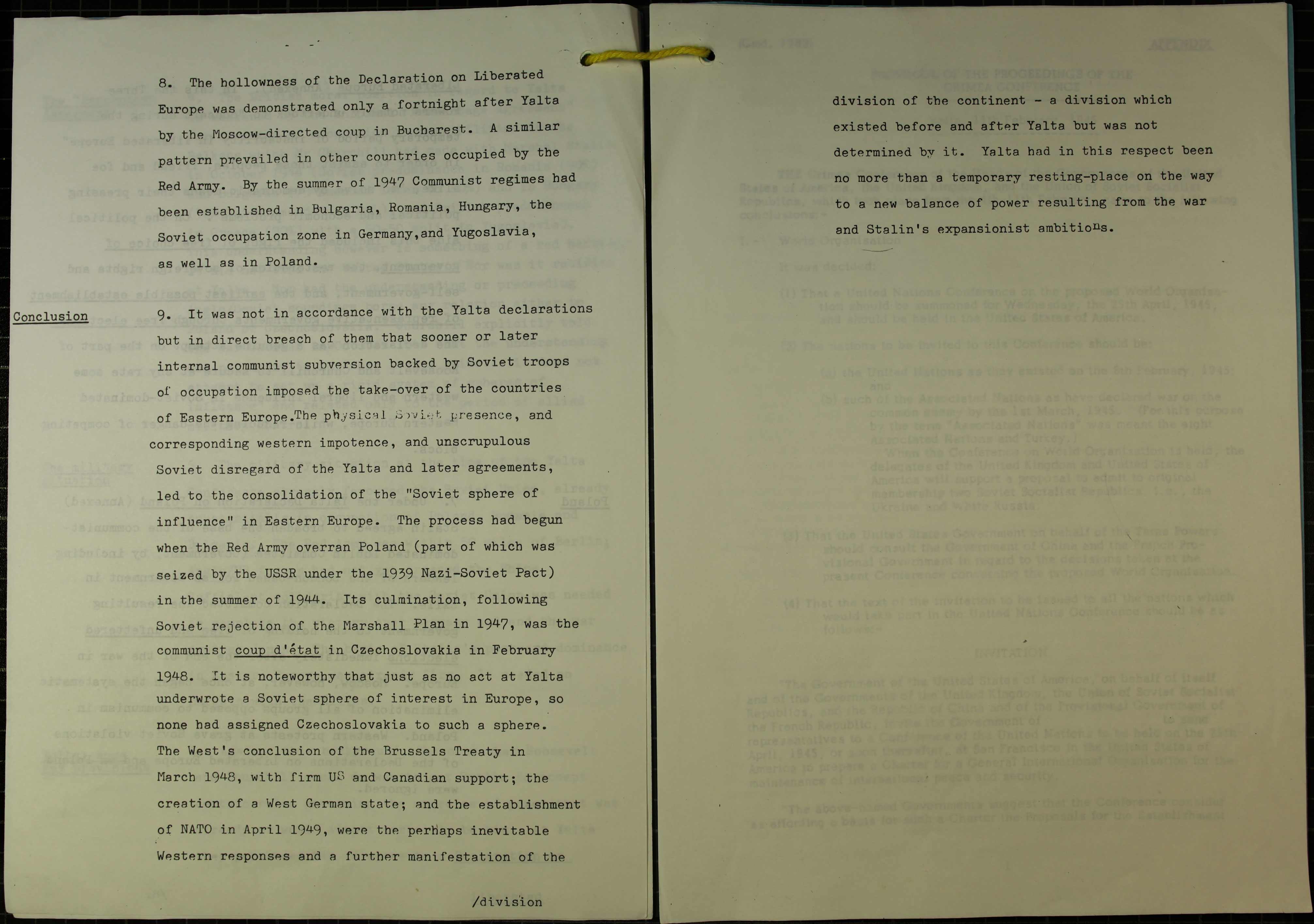
Extract from a Foreign Office document published in 1983. It analyses Soviet policy in Eastern Europe since 1945 (Catalogue ref: FO 972/80)
Transcript
…
- The hollowness of the Declaration on Liberated Europe was demonstrated only a fortnight after Yalta by the Moscow-directed coup in Bucharest. A similar pattern prevailed in other countries occupied by the Red Army. By the summer of 1947 Communist regimes had been established in Bulgaria, Romania, Hungary, the Soviet occupation zone in Germany, and Yugoslavia, as well as in Poland.
- It was not in accordance with the Yalta declarations but in direct breach of them that sooner or later internal communist subversion backed by Soviet troops of occupation imposed the take-over of the countries of Eastern Europe. The physical Soviet presence, and corresponding western impotence, and unscrupulous Soviet disregard of the Yalta and later agreements, led to the consolidation of the “Soviet sphere of influence” in Eastern Europe. The process had begun when the Red Army overran Poland (part of which was seized by the USSR under the 1939 Nazi-Soviet Pact) in the summer of 1944. Its culmination, following Soviet rejection of the Marshall Plan in 1947, was the communist coup d’état in Czechoslovakia in February 1948. It is noteworthy that just as no act at Yalta underwrote a Soviet sphere of interest in Europe, so none had assigned Czechoslovakia to such a sphere. The West’s conclusion of the Brussels Treaty in March 1948, with firm US and Canadian support; the creation of a West German state; and the establishment of NATO in April 1949, were the perhaps inevitable Western responses and a further manifestation of the division of the continent- a division which existed before and after Yalta but was not determined by it. Yalta had in this respect been no more than a temporary resting-place on the way to a new balance of power resulting from the war and Stalin’s expansionist ambitions.
